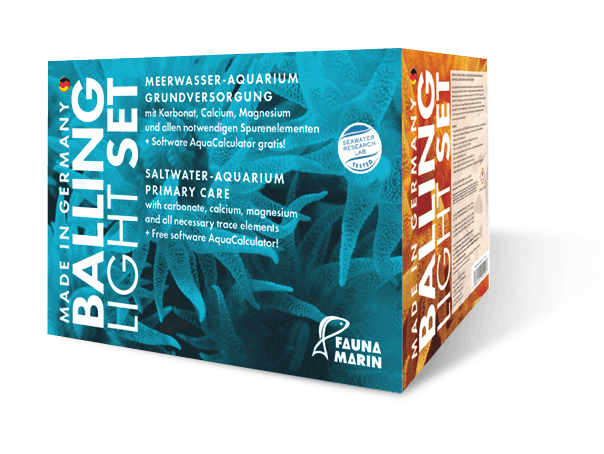Sulfur/Sulfate
Sulphur is usually present in seawater in the form of sulphate. With more than 2,500 mg/l (0,26 US.liq.gal.) sulphate, it belongs to the macro elements. The sulphur input into the aquarium is constantly high and only little is consumed. Sources are sea salts, feed, but also cheap trace elements concentrates and amino acid solutions may contain larger amounts of sulphates.
What’s this:
Sulphur occurs in seawater as sulphate and is part of normal seawater. A few amino acids and other compounds also contain certain amounts of sulphur, but these are negligible. Sulphate in itself is not dangerous, but reduced forms that can occur in oxygen-free areas of the aquarium are very toxic and often cause problems. Sulphur bacteria can also cause an accumulation of sulphur in the bottom gravel. These should generally not be dosed into a saltwater aquarium.
Problems:
High or too low sulphate levels should be avoided. Differences can easily be compensated by means of some partial water changes. For shifts of more than 30 %, please contact our laboratory for verification of the data. Too low sulphate values can be a trigger for bacterial infections (RTN/STN) on corals
Measures:
Regular control of the sulphur and/or sulphate value, regular partial water change with Professional Sea Salt. Avoid mineral salts or single doses of sulphate-rich trace mixtures.
Indicator species:
Too high or too low values are extremely rare, so there are no special animals or algae that could serve as an indicator. If bacterial diseases on corals appear in the aquarium, it makes sense to check the sulphate value.
Value too high:
Perform partial water changes, suspend external dosing.
Value too low:
No additional dosing necessary, partial water change with balanced salt is sufficient.
| Variety | Element |
|---|---|
| Default value | 850-950 mg/l (0,26 US.liq.gal.) |
| Skill Level | green |
| Source | salt, supply systems, trace element mixtures, dried food, frozen food, mineral salts |
| Available | Balling-Light-System, Professional Sea Salt |
| Importance 1–6 | 2 |
| Detection quality | safe |
| Relation values | chloride |

Balling Light:
The Balling Light System contains no additional source of sulphate, sulphates are sufficiently introduced into a system outside the calcium supply. The other compensation is done via the trace elements. The Balling Light System is balancing and stabilizes the ion balance.
Sulphur itself is found as a decomposition product of special bacteria or components of amino acids in water and especially in the substrate. There it is oxidized to sulfate by specialized bacteria, but is then converted to hydrogen sulfide in anoxic areas of the aquarium. This creates rotten spots in the tank. During this process, sulphides are constantly released into the water, preventing the cells from breathing. Rotting spots in the tank are therefore to be avoided at all costs.
Sulphate itself is important for the corals for the defence against pathogenic germs. We have not yet been able to determine a limit value in experiments, so we recommend that natural concentrations be maintained. A fluctuation of 10 % is harmless.
The relation of both values to each other (sulphur and sulphate) can give an indication of disturbances in the sulphur cycle.
During the decomposition of organic substances (including undigested fish food), sulphur compounds are split off as hydrogen sulphide. The oxygen immediately oxidizes this to sulfate. Conversely, sulphate in sediments is reduced to hydrogen sulphide by sulphate reducing bacteria. This happens relatively quickly in the aquarium, especially in areas with poor water flow, under detritus accumulations and at low nitrate levels. This should absolutely be avoided. Avoid the dosing of sulphur bacteria, these support the buildup of PO4 deposits in the substrate. An important component of the Balling Light System is avoiding separate sulphate additions, as the input of other sulphur sources into the aquarium system is sufficiently high. With Balling light, the sulphur content in the aquarium is automatically stabilised.
Tip:
The Balling light system is composed of minerals in such a way that there is no accumulation of sulphates in the system. The other entries together with feed, salt mixtures and trace element concentrates are usually more than sufficient for this purpose. Some salt mixtures contain more or less sulphates than the reference value. However, this generally does not give any particular advantages. Therefore, use salt mixes whose sulphate value is based on natural values.